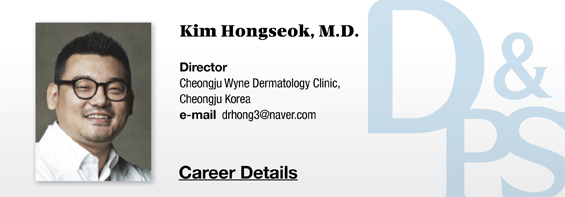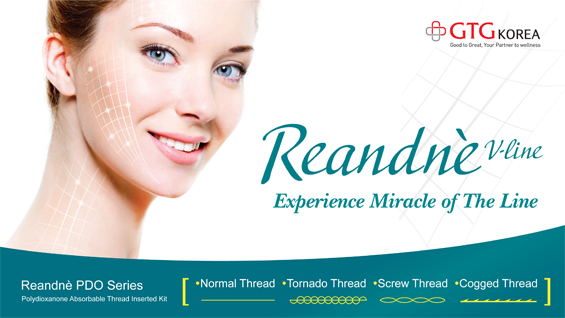
Topical vitamin C should be used long-term to get the full benefit and can be safely combined with other common antioxidants (UV blocking agent, tretinoin, AHAs like GA). Side effects include yellowing in the site of application and it can also cause stains in clothes. Vitamin C should be completely removed during cleansing to prevent rare side effects such as irritation, tingling, erythema or dryness, etc. However, these conditions can be alleviated with a moisturizer. Caution is advised with applying vitamin C in the eye area.
The most important aspect to consider regarding topical vitamin C is how effectively it is delivered into the skin in a stable form. For this purpose, various formulation types including microsphere, nanoparticles, multilayered microemulsion, etc. are being developed. Permeability of vitamin C increases 20 fold after CO₂ laser or Er;YAG laser therapy, which makes it an ideal post-treatment care for preventing erythema after laser resurfacing[i]. Smokers have lowered dermal vitamin C level and are susceptible to UV damage. Therefore, supplementation of vitamin C is important for preventing signs of aging. Striae distensae was improved markedly after 3 months of topical 20% GA combined with vitamin C.
Vitamin E
Vitamin E is naturally found in cucumber, seeds, nuts, corn, soy, margarine and dairy products, etc. Among four types of tocopherol (α, β, γ, δ), α-tocopherol has the strongest activity. γ-tocopherol inhibits expression of tyrosinase in melanoma cells. Vitamin E works as a lipid-soluble antioxidant in the skin and protects against oxidative stress. It is commonly used in burn, surgical wound or other wound care. Vitamin E also effectively protects against cardiovascular diseases. It inhibits arterial lipid peroxidation to reduce the risk of arteriosclerosis. Oral intake of Vitamin E reduces lipid peroxidation and lowers the risk of cardiovascular diseases.
Oral administration of vitamin E is effective in facial hyperpigmentation. Particularly, when combined with vitamin C. In a laboratory study, α-tocopheryl ferulate (α-tocopherol+ferulic acid) was found to inhibit melanogenesis and indirectly inhibit tyrosin hydroxylase activity. Vitamin E has more potent melanin inhibition than albutin and kojic acid. In normal melanocytes, 30ug/ml of α-tocopherol diluted in 150ug/ml of lecithin was found to inhibit melanogenesis without suppressing cell growth. TDMG (tocopheryl-dimethyl-glycinate) is extracted from tocopherol. In a Japanese study, γ-TDMGand was shown to reduce UV-induced pigmented lesions. Topical application of 0.5% γ-TDMG was found to inhibit melanogenesis after UVA, UVB exposure.
Green Tea
green tea one of the most widely enjoyed beverages in the world and its ingredient GTPs (Green Tea Polyphenol) has antioxidant action. Green tea has many uses including moisturizer, cleanser, shower gel, tooth paste, shampoo, perfume, and drink. Most green tea has a small amount of GTPs. Green teas with a high polyphenol content (50~90%) have slight brown coloration. Green tea is obtained from the leaves of Camellia sinensis and contains four types of pholypheonolic catechin; ECG[ (-)-epicatechin-3-O-gallate], EGCG[ (-)-epigallocatechin-3-O-gallate], GCG[ (-)-gallocatechin-3-O-gallate], and EGC[ (-)-epigallocatechin-3-O-gallate]. Among these, EGCG, whose content is about 30-40% in dry leaves, has been most extensively studied.
GTP has antioxidant, anti-inflammatory, and anti-cancer effects with both topical and oral administration. In the skin it is a potent inhibitor of UV-induced carcinogenic activity. It protects the skin against UV-induced changes (sunburn, immunosuppression, and photoaging, etc.). When used with sunblock, its protective action is enhanced. A recent study reported that EGCG promotes differentiation and proapoptosis of melanocytes. GCG’s inhibitory action is strongest against tyrosinase. EGCG inhibits melanogenesis in a dose-dependent manner and has a much more potent hypopigmenting effect than kojic acid. Recently, a study examining the effect of EGCG on countering the oxidative reaction of vitiligo reported that treating the depigmented lesions with EGCG resulted increased number of epidermal melanocytes and increased CD8 (+) T cells around the lesion in histologial examination. Topical use of EGCG brought a significant decrease in TNF-α, IFN-γ and IL-6 and 5% EGCG was found to be an appropriate concentration for treating vitiligo[ii].
Pycnogenol
Pycnogenol is an antioxidant substance obtained from the maritime pine (Pinus Maritima) bark in Southern France. It protects against UV-induced pigmented lesions. Oral administration of the dose of 25mg of pycnogenol, three times daily, was found to drastically reduce melasma[iii]. In another study, topical use of pyconogenol was also found to be effective. There was dose-dependent benefit in sunburn-related inflammation. Physiological activity of pycnogenol was seen when applied on skin after UV exposure and topical pycnogenol is also thought to have photoprotective effect similar to a sunscreen. More scientific evidence is needed to support these claims[iv].
Silymarin
Silymarin is a naturally found polyphenolic flavonoid obtained from the seeds of milk thistle (Silybum Marianum). Silymarin was used as herbal medicine for 2 millennia. This free radical scavenger has hepatoprotective effect and is commonly used as a hepatoprotective agent in Europe and Asia. silybin (silibinin), one of the key ingredients of silymarin is a physiologically activated substance with antioxidant, anti-inflammatory and anti-cancer effects[v]. Topical application of silybin immediately before or after UV irradiation helps reduce thymine dimer-positive cells and provides a powerful protection against UV-induced epidermal damage. Silybin accelerates UVB-induced apoptosis and inhibits the activity of UV-induced NFκB to prevent inflammation. It also acts as a free radical scavenger. Most milk thistle formulations are authorized for oral intake in the US and can be used as an oral UV blocking agent. Silymarin increases production of glutathione in the liver, stomach and intestines[vi]. It also works as an iron chelator that reduces oxidation of glutathione triggered by overaccumulation of iron in hepatocytes and mitochondria[vii].
[Advertisement] Reandnè Thread Series – Manufacturer: GTG KOREA(www.gtgkorea.com)
Alpha-lipoic acid
Alpha-lipoic acid is also known as thioctic acid. Both alpha-lipoic acid and dihydrolipoic Acid (DHLA) forms are potent antioxidants. Alpha-lipoic acid is recently being used in a popular facial injection nicknamed “Cinderella injection” in aesthetic clinics in Korea. It is both water-soluble and fat-soluble, thereby affecting both fat-soluble cell membranes and water-soluble components[viii]. It inhibits NFκB transcription and prevents UV-induced oxidative damage. It chelates copper to inhibit tyrosinase activity as well as production of DOPAquinone derivative[ix]. It interacts with superoxid, hydroxyl radical, bringing potent antioxidant action. It also raises the intracellular GSH levels and reduces photo-sensitivity[x]. Lipoic, dihydrolipoic acid has whitening effect as it inhibits tyrosinase by inhibiting expression of MITF (regulator of melanocyte development and survival). Sodium zinc dihydrolipoylhisidinate (DHLHZn) is Zn2+/dihydrolipoic acid extract which forms a covalent bond with DOPAquinone to inhibit formation of DOPAchrome, leading to whitening effects. Recently, alpha-lipoic acid is being used in various cosmetic products, however, its viability as a topical agent is to be proven as there have been reports of contact dermatitis. More research is needed in this regard in the future. Alpha-lipoic acid has also been reported to be promote weight loss by suppressing appetite and increasing energy consumption. It is recently being used in treatment of obesity, taking advantage of its promotion of UCP-1 that dissipates excess energy into heat.
References
[i] Lee RW, Shen CS, Wang KH, Hu CH, Fang JY. Lasers and microdermabrasion enhance and control topical delivery of Vit C. J Invest Dermat. 2003;121:1118–25
[ii] Zhu Y, Wang S, Lin F, et al. Fitoterapia. 2014 Dec;99:243-51. doi: 10.1016/j.fitote.2014.08.007. Epub 2014 Aug 12. The therapeutic effects of EGCG on vitiligo.
[iii] Ni Z, Mu Y, Gulati O. Phytother Res. 2002 Sep;16 (6):567-71. Treatment of melasma with Pycnogenol.
[iv] Nagata H, Takekoshi S, Takeyama R, et al. Pigment Cell Res. 2004 Feb;17 (1):66-73. Quercetin enhances melanogenesis by increasing the activity and synthesis of tyrosinase in human melanoma cells and in normal human melanocytes.
[v] Lassalle MW, Igarashi S, Sasaki M, et al. Pigment Cell Res. 2003 Feb;16 (1):81-4. Effects of melanogenesis-inducing nitric oxide and histamine on the production of eumelanin and pheomelanin in cultured human melanocytes.
[vi] Mira L, Silva M, Manso CF. Biochem Pharmacol. 1994 Aug 17;48 (4):753-9. Scavenging of reactive oxygen species by silibinin dihemisuccinate.
[vii] Pietrangelo A, Borella F, Casalgrandi G, et al. Gastroenterology. 1995 Dec;109 (6):1941-9. Antioxidant activity of silybin in vivo during long-term iron overload in rats.
[viii] Kagan VE, Shvedova A, Serbinova E, et al. Biochem Pharmacol. 1992 Oct 20;44 (8):1637-49. Dihydrolipoic acid–a universal antioxidant both in the membrane and in the aqueous phase. Reduction of peroxyl, ascorbyl and chromanoxyl radicals.
[ix] Saliou C, Kitazawa M, McLaughlin L, et al. Free Radic Biol Med. 1999 Jan;26 (1-2):174-83. Antioxidants modulate acute solar ultraviolet radiation-induced NF-kappa-B activation in a human keratinocyte cell line.
[x] Fisher DE. Pigment Cell Res. 2000;13 Suppl 8:145-9. Microphthalmia: a signal responsive transcriptional regulator in development.
-To be continued




















